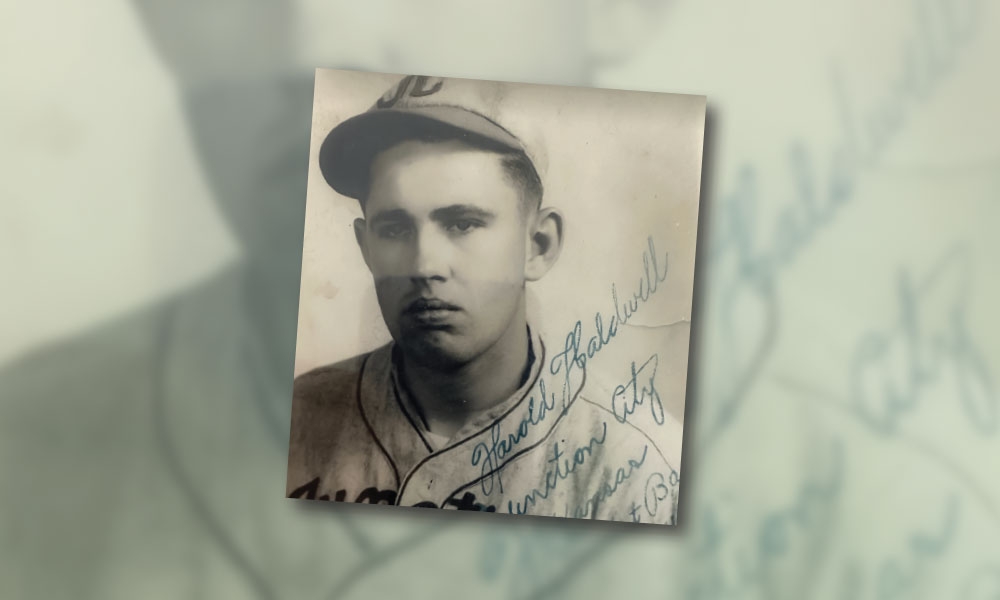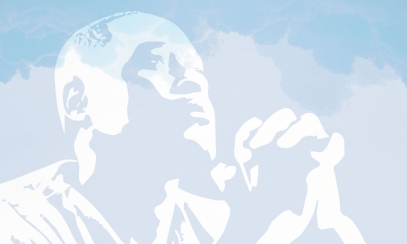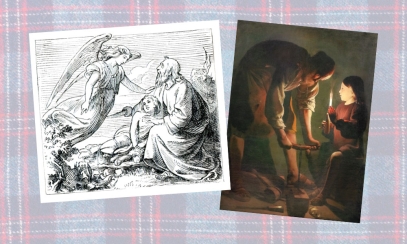
Connecting with Independence Day
In the Frye family, my mom’s very religious family of eight kids, five of whom served in World War II at the same time. Thankfully, they all came home.
In the Frye family, my mom’s very religious family of eight kids, five of whom served in World War II at the same time. Thankfully, they all came home.
Two other veterans of WWII married into that family of eight, and one of those had come home without his right arm. That was my Uncle Harold, my most personal connection to WWII. Harold served in Europe in the U.S. Third Army under Gen. George Patton.
Harold Caldwell
Harold married my aunt, Eleanor, who was a U.S. Navy nurse. After the war, they met in Cincinnati, where they both lived. He was not Catholic, but he raised his daughter Catholic after marrying Eleanor — Grandma Frye would have frowned on the marriage otherwise.
I called their daughter, my cousin Mary Pat, to clarify some of what happened to her dad.
In addition to losing his right arm, she said “his left wrist was also shattered” during a land mine explosion. “It had to be reconstructed and fused.
“When he was shipped home from the MASH unit, the MASH surgeon came and sat by his bed beforehand and told him that when he arrived stateside, the hospital there would X-ray his arm and insist the surgeon did a poor job. The MASH surgeon said, ‘Please know, I am very skilled at what I do. Don’t let anyone re-operate. This is the best you can or will be.’
“Physical therapy was being housed in a hotel in New York, which was converted to a hospital. His PTSD was severe, but he covered it well. It is amazing what one with determination can accomplish.”
More to the story
Uncle Harold was truly heroic in how he handled his situation. He was highly skilled with his one arm, even finishing the construction of a basement by himself. Harold had been drafted into the U.S. Army while playing in the very active Kansas baseball leagues of the 1940s — see the photo of him in his Junction City uniform — a route for many to the major leagues. He then played on the Army baseball team until he was deployed overseas. Legend has it that after the war, he still managed to hit a home run with a softball and one arm.
I got to play golf with him, and he was as steady as Scottie Scheffler down the middle. Surprisingly, Harold played from the left side with his left arm, firing from behind the ball. I knew another one-armed player (left arm, also) who played the more traditional way, from the right side, dragging the club through with his leading left arm. However, the modern swing might suggest that Uncle Harold was correct, and his baseball background probably contributed to his choice of swings.
I wish I had known my uncle better, but the occasions to do so were slim. I am glad I got to play golf with him, not to mention going to a few Cincinnati Reds games in his special box by the player runway in and out of the home dugout. We rubbed elbows with the likes of Big Klu [Ted Kluszewski], Gus Bell, Wally Post, Roy McMillan and Johnny Temple; and I remember third baseman Bobby Adams was the player he knew the best. I’ve wondered if he might have played baseball with Adams before the war.
But I would have never known Uncle Harold suffered from PTSD. He always seemed so strong and in control — and he was. He was kind of the strong, silent type.
Looking back
Years earlier, I remember Harold coming to my grandparents’ house to pick up his future wife Eleanor for a date. I watched intently as he quietly helped her put on her winter coat. No words were exchanged between them, nor with the curious child in the adjacent room. But I did notice he was helping her with only one arm. Off the couple went silently into a winter’s night, leaving my 4-year-old mind to think and wonder.
God bless him and all the other war heroes of times past and present. And thank you, Uncle Harold, for being a wonderful influence on our extended Catholic family, all who remember you for the brave, never-give-up, good man that you were.
Thomas Dorsel, Ph.D., is professor emeritus of psychology and a graduate of the University of Notre Dame. He lives on Hilton Head Island with his wife Sue and is a parishioner at St. Francis by the Sea Church. Visit him at dorsel.com.



